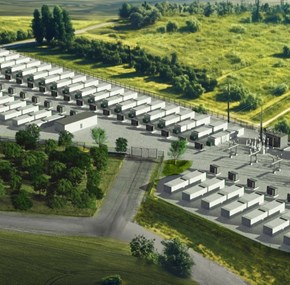2020 goals: For many member states the green finish line is a long shot
EU member states will have to raise the bar to achieve the common 2020 goals for sustainable energy. As things stand now, we are headed in the wrong direction. Solar PV systems could be a future solution if the EU is to reach the next climate goals.
We have heard it all before. The ice caps are melting, water levels are rising, and Pacific islands will see flooding. These are the consequences of the global CO2 footprint.
Therefore, It is critical that the EU member states continue to wave the green banner and make an extra effort to achieve the common goal of 20 percent of all energy consumption in the EU coming from green energy sources by 2020.
But even if, overall, the EU countries are on their way to meeting the climate goals, many countries are lagging behind and, in all likelihood, will not reach their individual 2020 goals. This is the conclusion of a report from the European Environment Agency (EEA).
And that is a problem, according to Senior Business Developer at Obton Klaus Andersen, who has kept a close eye on the European energy sector for many years. He sees solar PV as an obvious choice if member states – that are far away from the finish line – are to reach their goals. If not in 2020, then in 2030, when the EU goal is for 32 percent of the total energy consumption to come from sustainable energy:
“If we don’t get our acts together, there are going to be serious consequences for the entire planet”, says Klaus Andersen, adding:
“The biggest challenge is that 2020 is right around the corner. So it is unlikely that all countries will reach their goals. It takes a long time to transform your power plant production or switch to, e.g. wind power. It also takes time to switch to solar cells. But solar PV projects tend to be approved faster and easier to deal with from a purely technical perspective. So they could be a possible solution to helping member states to reach their goals for 2030.”
Energy consumption in the EU is increasing
The report shows that sustainable energy's share of the final energy consumption in the EU has doubled since 2005. But even though the EU is on its way to achieving its goals for 2020, the share of energy from sustainable energy sources is no longer growing as fast. It rose from just 16.7 percent in 2015 to 17 percent in 2016 and 17.4 in 2017.
This is because the total final energy consumption in recent years has risen in some EU member states – especially in the transport sector. There, the share coming from sustainable energy was just 7 percent in 2017 – with the majority coming from biofuels.
In comparison, 85 percent of all new electrical capacity came from sustainable energy. And wind power and solar cells accounted for three quarters of this energy.
“For some countries, it is a very ambitious goal, while for others, it is not so ambitious. One could say that Europe is split in two. The Nordic countries, as always, are leading the pack, while the countries of Southern Europe are having a harder time keeping up.”
That is also in the report. There are countries where over 30 percent of the final gross energy level comes from sustainable green energy. This is true of countries such as Sweden, Denmark, Finland, Austria and Latvia, while countries such as Belgium, Luxembourg, Malta and the Netherlands are below 9 percent.
EU citizens are concerned about the climate
The domestic political climate in the various EU countries determine in part why achieving the individual climate goals can take so long, Klaus Andersen explains. He points out that politicians often make decisions based on what gets the most votes – for instance, nursery schools and nursing homes. The climate has not typically been at the top of the list.
“In the latest elections in Denmark, however, climate policy was a hot topic. And in Germany and the Netherlands, it has also been high on the agenda.”
If you ask the European population, the climate is an important topic. As Obton recently wrote in an article on the ‘IKEA effect’, 78 percent of EU citizens are concerned about climate change – while that is only the case for 63 percent in the USA and 65 percent in China.
Klaus Andersen notes that we should turn our attention to those countries that are lagging behind – and where there is still the political will to switch to green energy. If you look south of the border – to the Netherlands and Germany, these are countries he believes are worth focusing on.
They have namely established a system that promotes sustainable energy production from, e.g. wind and solar. And this could be the path forward for getting the wheels turning on the green energy machine.
“The Netherlands has licensing rounds where energy projects are contracted out, so you can bid with the possibility of winning the contract and getting a government subsidy. Several countries are adopting their own similar model.”
2050 goal was abandoned
It is not only 2020 and 2030 that countries have their sights on. Of the EU countries, a majority of them will make 2050 the year that the EU becomes CO2-neutral. But at the climate meeting in June it became clear that the countries could not reach an agreement after all on a joint EU strategy for CO2-neutrality.
This, despite the EU heavyweight Germany having just announced it would back up a strategy for CO2-neutrality – just as 17 other EU countries did.
Instead, the countries now point in a memorandum to the UN's 2015 Paris Accord, in which the 2050 goal is to maintain the overall rise in temperature to below 2 degrees Celsius.
Get control in one's own back yard
It is important now that those EU countries that are lagging behind understand the gravity and reach the climate goals. Not only is there pressure from the EU on the individual countries, but it is also the EU’s goal to pressure the rest of the world at the UN Climate Action Summit in New York on 23 September:
“Scandinavia, and now the EU, too, have taken the lead on waving the green energy banner. So it is important that we hold the banner high and reach out to the big energy countries when global energy policy is discussed at the highest levels. If the EU cannot control what goes on in its own back yard, it is easy for other countries to point a finger at us.”
China, India and the USA are the big energy consumers in the global arena and accounted for two thirds of the total increase in energy consumption in 2018.
“So it is here that the real work lies”, says Klaus Andersen







